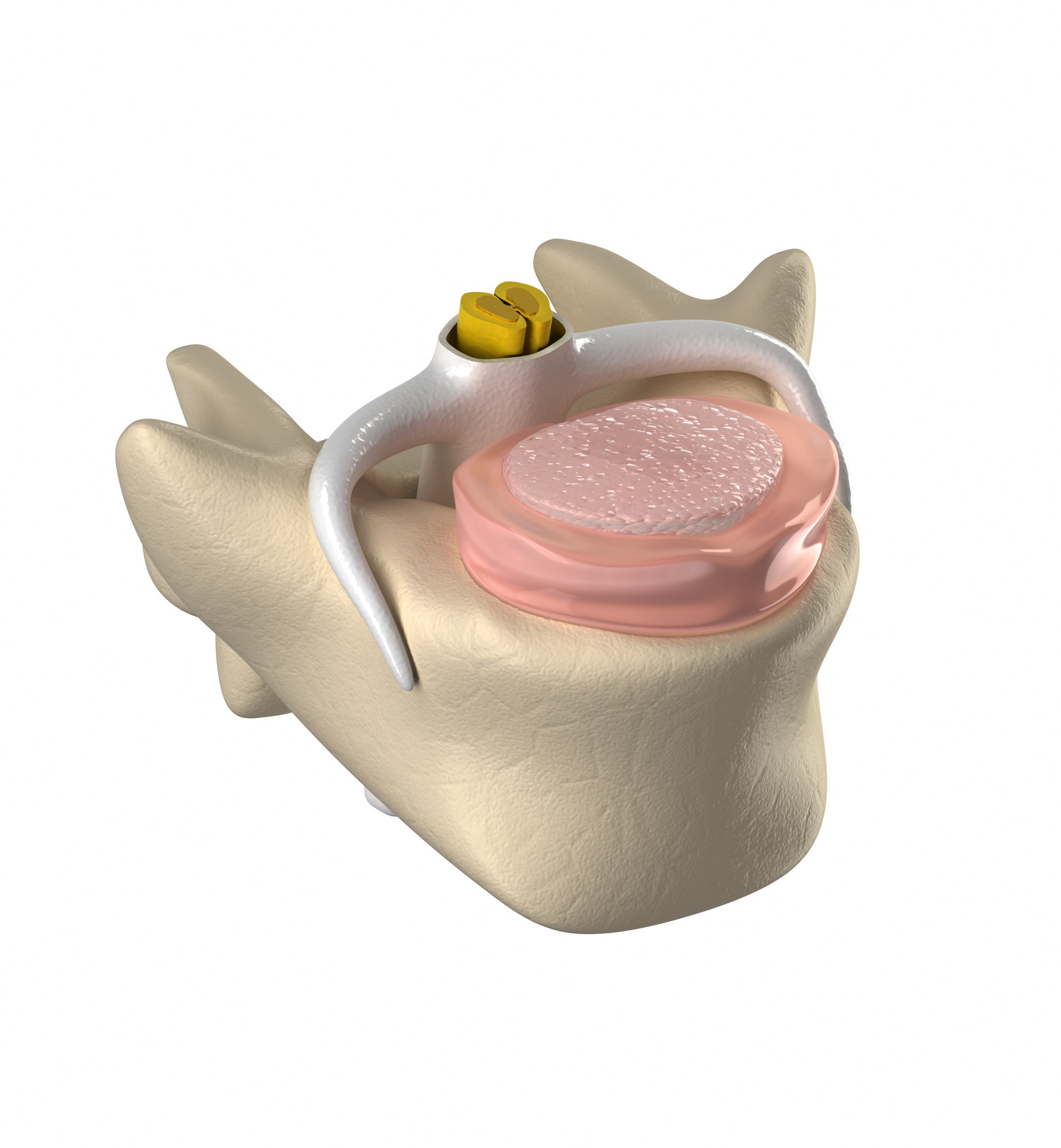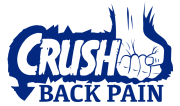Safe exercises to do with a herniated disc are key in the recovery process
Doing the right exercises will help your disc heal.
Doing the wrong exercises will keep your disc from healing.
This article outlines proven, safe herniated disc exercises.
Principles that can be applied to any exercise in order to make it disc friendly are explained in detail.
Safe Exercises to do With a Herniated Disc
- Dips
- Pull-ups
- Bird dog
- Side bridge
- Bridge
- Forward alternating lunge
- Reverse alternating lunge
- Walking lunge
- Lateral lunge
- Fast walking
- slow running/jogging
- Cossack squat
This list is by no means exhaustive. It’s a great place to start. Each exercise loads the spine dynamically, maintains the lumbar spine in neutral, and engages the core.
What are safe exercises to do with a herniated disc?
The exercise should engage the muscles of the trunk and spine (core) with active movement.
So cyclic loading and unloading of the disc with movement is superior to loading the disc statically.
Fast walking or slow running have been shown to be beneficial for the disc.
Both of these activities result in cyclic loading and unloading of the disc, with load sharing through the lumbar disc, joints, and muscles. Fast walking and slow running increase the hydration and glycosaminoglycan content of the disc. The size of the disc is also increased with these activities.
A larger, thicker disc with greater water and glycosaminoglycan content is a healthier, stronger disc
A simple walking program will improve disc health.
Walking promotes load sharing between the tissues of the lumbar spine, is the definition of dynamic loading, and decreases lower back pain.
Walk This Way
Research shows that walking 90 minutes per week decreases the risk of developing lower back pain.
Walking, by itself, is preventative.
An entire rehabilitation program can be based on a walking program. A good goal is to build up to walking 90 minutes or more per week over the course of four to six weeks. Then maintain the walking program to reduce the likelihood of future lower back pain.
Weighted Walking To Decrease Disc Pain
Walking and jogging are not the only types of exercise that improve disc health.
Any exercise that results in cyclic loading of the lumbar tissues, maintains the spine in a neutral position, and engages the core musculature is beneficial.
Safe Exercises to Start With
Exercises that are NOT Safe for a Herniated Disc
Any type of exercise that involves loading the spine and keeping it loaded without movement should be avoided. Most seated exercises using machines fall into this category.
Exercises that involve twisting the spine with resistance have no place in a herniated disc exercise program.
Flexion with compression will not benefit herniated discs. Deep squats with lumbar flexion at end range and the leg press machine are examples.
Fast full range sit ups and any rapid movement that involves repetitive end range spinal flexion or extension will not benefit a herniated disc.
Avoid These Exercises If You have a Herniated Disc
Make ANY Exercise a Safe Exercise to do with a Herniated Disc
Understand JUST TWO principles to make exercises safe to do with a herniated disc.
-
- Neutral Lumbar Spine
The lumbar spine is designed to function effectively within a range of motion. The neutral range is basically the natural position of the spine. It’s not too flexed or extended. It’s neutral. This is generally the position the spine is in when you’re standing and comfortable.
When exercising the spine should be maintained in this position. The function of the core muscles are to act as a stabilizing back belt to maintain this neutral position during activity.
2. Dynamic Loading
Dynamic loading is cyclic loading. The load changes and is shared between the discs, facet joints, and muscles of the spine. Dynamic loading involves movement of the arms, legs, or both while the spine is kept in a neutral position.
The movement results in cyclic loading and unloading of the disc opposed to continuous loading. The loading/unloading optimizes the hydration and nutrition of the disc.
This is why fast walking is beneficial for discs. It’s simply cyclic loading with the lumbar spine maintained in a neutral position.
Understanding these principles is MORE Important than Knowing Specific Exercises
It’s helpful to have a repertoire of exercises that are healthy for the disc.
It’s even better to apply these two principles to any exercise. This way whatever exercise you’re doing is a “safe herniated disc exercise.”
-
- Maintain a NEUTRAL lumbar spine
- Focus on exercises that engage the core musculature and result in the spine being relatively stable while the arms, legs, or both move.
.
Exercise is more effective when it's done consistently
You don’t need to exercise for an hour every day. You do need to be consistent though.
You can do this many different ways.
You could walk two days per week and do three or four exercises from the list two or three days per week.
You could simply walk three to five days per week.
You could only focus on exercises on the list and do these three to five days per week.
The point is you can set this up however you want. The key is setting up a program that you will actually stick with.
12 Week Herniated Disc Programs
Where do I start?
Check out the Crush Back Pain Programs for step by step training to heal your disc.
The three exercises covered in the video below are safe exercises to do with a herniated disc
These videos cover how to walk and exercise if you have a herniated disc
Lumbar disc anatomy and how exercise affects the disc
Lumbar Disc Anatomy
The discs between the vertebrae are comprised of two parts. The annulus fibrosus and the nucleus pulposus.
The outer pink part is the annulus fibrosus. The inner pinkish part that is held in by the annulus is the nucleus pulposus.

The annulus fibrosus forms the outer layer of the disc and is made up of 15 to 25 stacked layers of collagen.
Each layer is oriented 60 degrees from the layer adjacent to it. This orientation increases the strength of the disc while allowing flexibility.
The annulus functions as a strong, rigid container to hold the nucleus pulposus in place. In addition to keeping the nucleus contained the annulus fibrosus also stabilizes the spine by resisting torsion, flexion, and extension.
The nucleus pulposus is a gel-like structure in the middle of the disc. It’s made of up water, collagen, and proteoglycans. 66% to 86% of the nucleus is water.
The nucleus functions to spread forces out over the vertebrae above and below it, preventing excessive forces through one part of the vertebrae.
Consequently the lumbar spine can move through considerable ranges and tolerate countless activities without compromising the vertebral bodies.
The disc acts as a force distributor, link, and cushion between vertebral bones. It allows motion while also stabilizing the spine and resisting excessive movement in any one direction.
How Does Exercise Help the Disc?
The discs between the vertebrae are avascular, they have minimal to no blood supply. In fact, the intervertebral disc is the largest avascular structure in the body.
Consequently the discs obtain nutrients and get rid of waste by fluid diffusing through the endplates of the vertebral bodies.
Exercise results in cyclic loading and unloading of the disc, promoting the diffusion of solutes through the vertebral endplates.
Exercise is essential for disc hydration, nutrition, and for maintaining the balance between water and proteoglycan content.
The inside of the disc (nucleus pulposus) contains water and proteoglycans. Exercise maintains the balance between the two.
Research shows that exercise is required to maintain the health and function of lumbar discs.
This is a fact of healthy discs, that are not causing pain.
When a disc causes lower back pain, exercise is required to stimulate the healing process. Exercise also strengthens the disc so it can tolerate load and activity again.
Exercise improves disc hydration and proteoglycan content and increases disc height. Basically exercise improves disc health and strength.
Just like exercise makes bones and muscles stronger, exercise makes lumbar discs stronger.
FAQ
Can I do pull ups with a herniated disc?
Yes, pull ups are a good exercise to do with a herniated disc. The lumbar spine is in a neutral position and there is a gentle traction force through the lower back. The traction can be beneficial for herniated discs.
Are pull ups good for herniated disc?
Pull ups can be beneficial for lumbar herniated discs. The back and core muscles are activated during a pull up and there is gentle traction force through the lumbar spine. Back and core muscle strengthening and lumbar traction are both helpful for herniated discs.
What exercises not to do with a herniated disc?
Don’t do exercises that place the lumbar spine in end-range flexion. Don’t do exercises that repeatedly flex the lumbar spine. Don’t do exercises that flex the lumbar spine and twist it at the same time. Avoid stretching the lumbar spine into flexion.
What weightlifting exercises are safe with herniated L5 disc?
Exercises that allow the lumbar spine to maintain the natural lordotic curve. Lunges, shoulder presses, bench presses, pull-ups, dips, lat pull downs, rows, and squats can all be done with a herniated disc. The key is keeping the lumbar spine from flexing too much. Lumbar flexion exacerbates herniated discs. Any exercise can make a herniated disc more painful if the lumbar spine is allowed to flex to end-range or allowed to flex repeatedly.
On the other hand, almost any exercise can be made disc friendly if a few simple principles are understood. Proven Herniated Disc Exercises outlines safe exercises to do with a herniated disc. More importantly it outlines the principles you need to know to determine if any exercise is safe with a herniated disc.
How to learn exercises for herniated disc?
The best way to learn exercises for a herniated disc are with one on one instruction or video.
Start with Three Herniated Disc Exercises to Relieve Your Pain and Heal Your Disc.
Next check out Herniated Disc Exercise Progressions.
Once you’ve mastered the herniated disc exercise progressions look into Powerful Bulging Disc Exercises that Destroy Pain.
Walking is a proven, effective exercise for herniated discs. Unfortunately it’s often overlooked. Walk This Way…For Lower Back Pain Relief outlines the best way to walk if you have a herniated disc.
Weighted Walking for Bulging Discs is another proven exercise that decreases pain related to bulging and herniated discs.
What exercises to avoid with herniated disc?
Avoid exercises that flex the lower back to end-range. Avoid exercises that repeatedly flex the lumbar spine. Avoid exercises that load the lumbar spine in a flexed position. Herniated Disc? Quit These Exercises Today outlines the types of exercises to avoid with a herniated disc.



